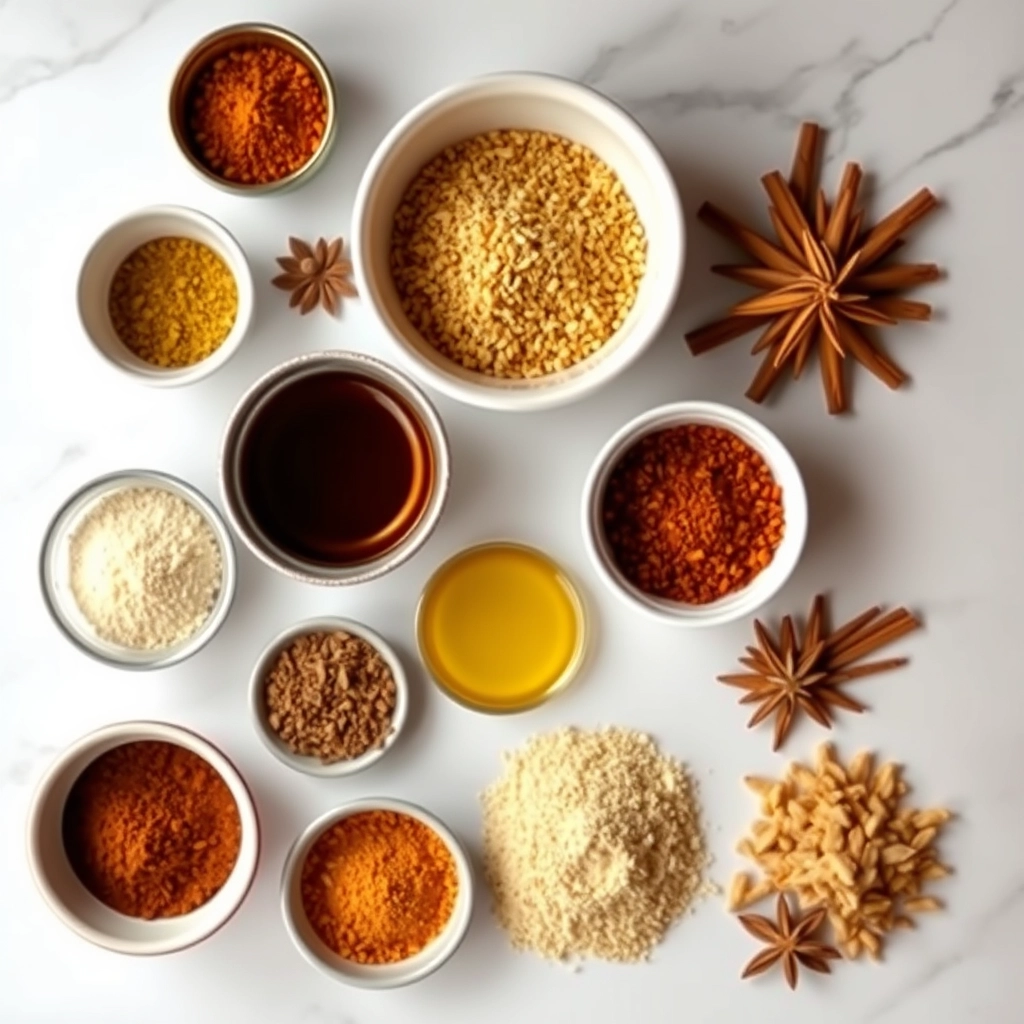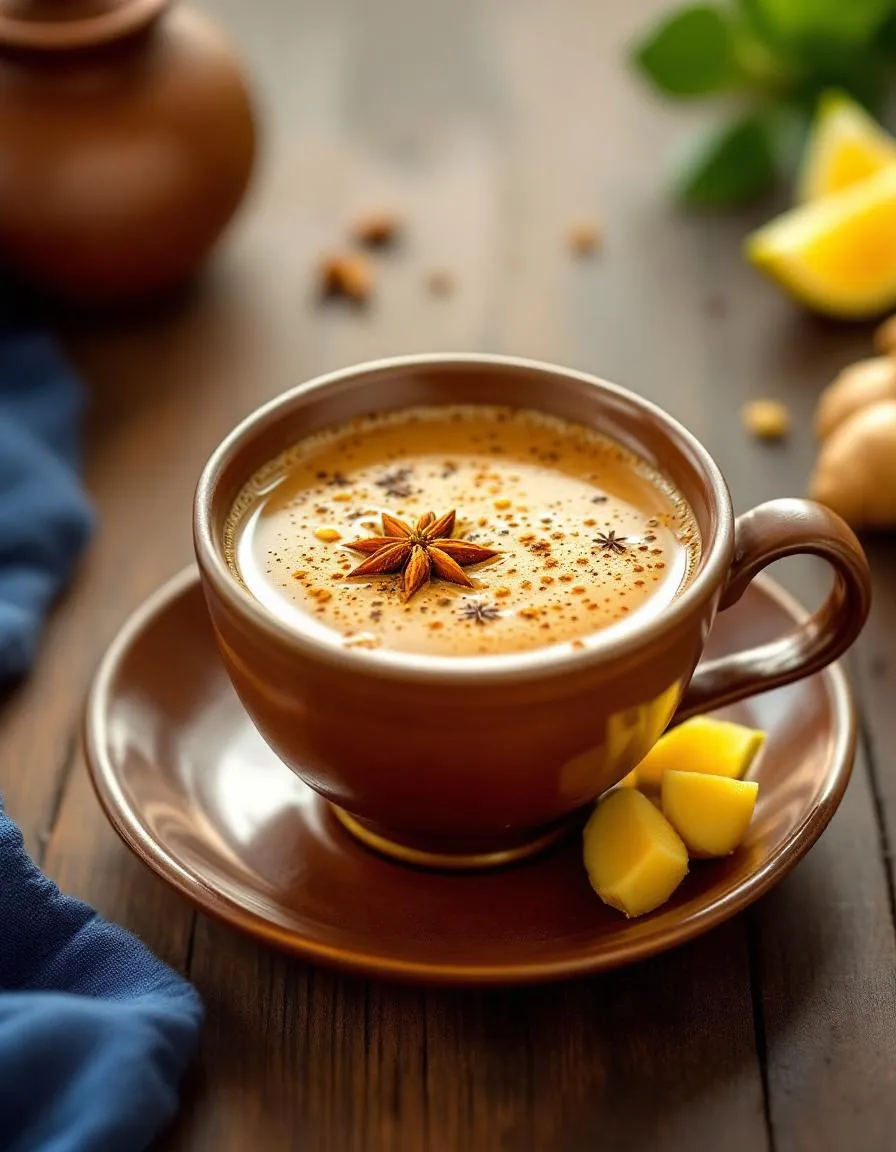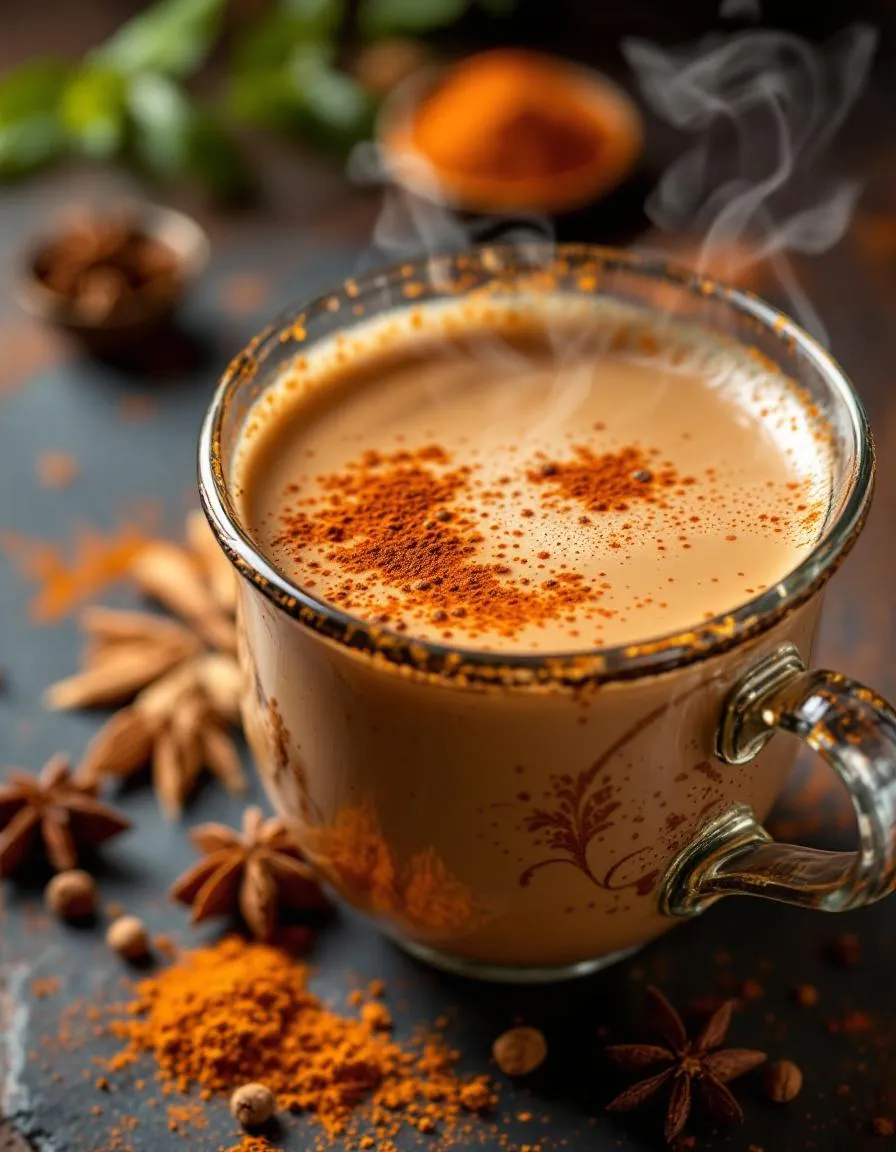Introduction
Hi there! I’m Emily, the heart and soul behind brekcakes.com. From my earliest memories, the kitchen has always been a place of warmth and creativity. It’s where I discovered the magic of turning simple ingredients into extraordinary meals and learned that the best dishes are often made with love as the main ingredient.
There’s something undeniably comforting about wrapping your hands around a steaming cup of Masala Chai Tea, especially on a chilly morning or during a quiet moment of reflection. Whether you’re a seasoned chai lover or new to its aromatic spices, this recipe will transport you to cozy corners and shared conversations. After all, Masala Chai Tea isn’t just a drink—it’s a hug in a mug, a ritual that slows time and warms the soul.
Masala Chai Tea, a fragrant blend of black tea, spices, milk, and sweetness, has roots in Indian culture but has won hearts worldwide. Unlike ordinary tea, its bold flavors come from a symphony of spices like cardamom, cinnamon, ginger, and cloves, each adding depth and warmth. For many, brewing Masala Chai Tea is more than a routine—it’s a moment of mindfulness, a way to pause and savor life’s simple pleasures. Here at brekcakes.com, we celebrate recipes that tell stories, and this one whispers of tradition, connection, and the joy of homemade goodness. If you’re craving more comforting drinks, explore our homemade hot chocolate or dive into the spices with our cardamom-spiced cookies.
Why I Love This Recipe
Masala Chai Tea holds a special place in my heart because it reminds me of lazy Sunday mornings with my grandmother. She’d simmer the spices slowly, filling the house with an irresistible aroma that drew everyone to the kitchen. Now, every time I make it, I feel that same sense of comfort and belonging. It’s not just about the taste—it’s about the memories, the laughter, and the love stirred into every sip.
Health and Nutrition
Why it’s good for your body
Masala Chai Tea packs a powerful blend of spices that offer more than just warmth and flavor. First, the black tea base provides antioxidants, which help combat free radicals and support overall wellness. Additionally, ingredients like ginger and cinnamon boost digestion and may reduce inflammation, making every sip a small step toward better health.
Moreover, Masala Chai Tea often includes cardamom, a spice linked to improved heart health and blood sugar regulation. Since the drink combines these spices with black tea, you get a natural energy lift without the jitters of coffee. Plus, the moderate caffeine content makes it a gentler choice for those sensitive to stronger stimulants.
Finally, the cloves in Masala Chai Tea add a touch of antimicrobial benefits, which can support immune function. Whether you enjoy it hot or iced, this spiced beverage turns a simple drink into a nutrient-rich ritual. With every cup, you nourish your body while savoring a timeless tradition.
How it fits in a healthy lifestyle
Masala Chai Tea fits effortlessly into a balanced diet, especially if you prioritize whole, flavorful ingredients. For those following a gluten-free or dairy-free lifestyle, simply swap regular milk for almond or oat milk. The spices still shine, and you keep the drink aligned with your dietary needs.
If you focus on heart-healthy choices, the cinnamon and ginger in Masala Chai Tea may help maintain healthy circulation and cholesterol levels. Pair it with a nutritious breakfast to start your day with sustained energy. For an extra protein boost, try adding a scoop of collagen powder or enjoying it alongside a high-protein snack.
Beyond specific diets, Masala Chai Tea encourages mindful sipping, which can help curb unnecessary snacking. Its rich aroma and depth of flavor make it a satisfying alternative to sugary drinks. Whether you unwind with a cup in the evening or use it as a midday pick-me-up, this spiced tea supports both your health and your daily rhythm.
PrintMasala Chai Tea
Description
A fragrant and spiced Indian tea made with black tea, milk, and a blend of warming spices.
Ingredients
For the Crust:
- 2 cups water
- 2 cups whole milk
- 4 black tea bags or 2 tbsp loose black tea
- 4 green cardamom pods, lightly crushed
- 1 cinnamon stick
- 4 whole cloves
- 1-inch fresh ginger, sliced
- 2–3 tbsp sugar or to taste
Instructions
1. Prepare the Crust:
- In a saucepan, combine water, cardamom, cinnamon, cloves, and ginger. Bring to a boil.
- Reduce heat and simmer for 5 minutes to infuse the spices.
- Add tea and simmer for another 2-3 minutes.
- Add milk and sugar, then bring to a gentle boil. Simmer for 2 more minutes.
- Strain the chai into cups and serve hot.
Notes
You can customize the seasonings to taste.

“`html
How to Prepare This Dish
Steps and time-saving tips
Start by crushing whole spices like cardamom, cloves, and cinnamon in a mortar and pestle to release their oils. Meanwhile, heat water in a saucepan over medium heat until it simmers. Add the crushed spices and let them steep for a minute to infuse the water. Next, stir in black tea leaves and simmer for another two minutes to develop a robust flavor. Pour in milk—whole milk works best for creaminess—and bring the mixture to a gentle boil. Reduce the heat immediately to avoid boiling over, then let it simmer for three more minutes. Strain the Masala Chai Tea into cups using a fine mesh sieve. Sweeten with honey or sugar to taste, and give it a final stir. For a time-saving tip, pre-grind your spices in bulk and store them in an airtight container. This way, you skip the crushing step during busy mornings. If you prefer a stronger tea, steep the leaves longer, but avoid over-boiling the milk to prevent a burnt taste.
Mistakes I’ve made and learned from
I once rushed the process and added milk too early, which diluted the spices and left the Masala Chai Tea tasting bland. Now, I always let the spices steep in water first for maximum flavor. Another mistake? Over-boiling the milk—it not only scalded but also created a messy stove cleanup. A gentle simmer is key. If you’re new to brewing chai, check out my guide on perfect tea steeping times to avoid bitterness. Also, don’t skip straining; I learned the hard way that whole cloves hiding in your cup are not a pleasant surprise. For more spice-balancing tips, my spice blends 101 post breaks it down simply. Trust me, a little patience makes all the difference.
“`

Cultural Connection and Variations
Where this recipe comes from
Masala Chai Tea weaves a rich tapestry of history, warming hearts across India for centuries. Originally rooted in Ayurvedic traditions, vendors sold it on bustling streets, blending black tea with spices like cardamom, cinnamon, and ginger. Families often passed down their unique versions, tweaking the balance of sweetness or heat to suit their tastes. Meanwhile, in some regions, they steeped the tea with peppercorns for an extra kick, while others preferred a milder, creamier texture with extra milk.
Beyond India, Masala Chai Tea took on new identities. In the Middle East, they sometimes added saffron for a luxurious twist. In Western cafes, baristas reinvented it as a latte, frothing the milk for a velvety finish. Even at home, modern cooks experiment—some swap honey for sugar or use oat milk for a dairy-free version. No matter the variation, the soul of Masala Chai Tea remains: a comforting, spiced brew that brings people together.
How it fits in today’s cooking
Today, Masala Chai Tea bridges tradition and modern life effortlessly. Busy mornings feel cozier with a steaming cup, while weekend brunches turn festive when paired with fluffy pancakes or cinnamon rolls. Health-conscious sippers love its natural spices, which many believe boost immunity—especially during colder months. Cafés even feature it year-round, serving it iced in summer or spiked with espresso for a chai latte twist.
Home cooks also keep the ritual alive, whether brewing a pot for family gatherings or gifting handmade spice blends. Some simplify the process with pre-mixed masala, while others toast whole spices for deeper flavor. However you enjoy it, Masala Chai Tea adapts, proving that some traditions only grow richer with time.
Taste and Texture
What makes it delicious
Masala Chai Tea wraps you in warmth with its rich, aromatic blend of spices and creamy texture. The first sip delivers a bold, earthy kick from black tea, softened by the sweetness of milk and sugar. Fragrant cardamom, cinnamon, and ginger dance on your tongue, while a hint of peppery heat lingers pleasantly. Meanwhile, the velvety smoothness of steamed milk balances the tea’s robustness, making every sip comforting and indulgent. Whether you savor it hot or iced, Masala Chai Tea feels like a cozy hug in a cup.
Boosting the flavor
Elevate your Masala Chai Tea by experimenting with fresh spices or swapping dairy for coconut milk to add a tropical twist. For a deeper flavor, steep the tea longer or toss in a star anise pod. If you love sweetness, drizzle in honey or a splash of vanilla extract. Pair it with a buttery almond flour cookie for a delightful contrast, or try a cardamom scone to echo the chai’s spicy notes. Small tweaks can transform your brew into something extraordinary.

Tips for Success
Best practices for results
Always use fresh spices when making Masala Chai Tea for the most vibrant flavor. Meanwhile, simmer the tea leaves and spices gently to avoid bitterness. Additionally, warm your cups beforehand to keep the chai hot longer. For a richer taste, opt for whole milk or a creamy dairy alternative. Finally, strain the tea carefully to remove all spice particles for a smooth sip every time.
Mistakes to avoid
Avoid boiling the milk too vigorously, as it can scorch and alter the taste of your Masala Chai Tea. Instead, heat it slowly for a creamier texture. Furthermore, don’t skip blooming the spices in hot water first, as this step unlocks their full aroma. If you’re new to brewing chai, check out our guide on perfect tea steeping times for precision. Also, remember that over-sweetening can mask the spices, so adjust sugar gradually. For more on balancing flavors, explore our tips on spice blending basics.
Serving and Pairing Suggestions
How to serve this dish
Serve Masala Chai Tea steaming hot in delicate ceramic cups or rustic mugs to enhance its cozy appeal. For a festive touch, garnish each cup with a cinnamon stick or a sprinkle of ground cardamom. Meanwhile, consider offering it alongside a small bowl of raw sugar or honey so guests can sweeten to taste. Perfect for chilly mornings or afternoon gatherings, Masala Chai Tea also shines as a welcoming drink during holiday parties. To elevate the experience, pair it with a beautiful tray of spiced cookies or serve it in clear glass teapots to showcase its rich color.
What goes well with it
Warm, spiced Masala Chai Tea pairs wonderfully with buttery pastries like our flaky homemade croissants, which balance its bold flavors. Alternatively, try it with a slice of moist cinnamon-swirled banana bread for a comforting snack. For a savory twist, serve it alongside lightly salted nuts or crispy samosas to contrast the tea’s sweetness. Each pairing highlights the aromatic spices in Masala Chai Tea while adding texture and variety to your spread.

Masala Chai Tea is a spiced Indian beverage made with black tea, milk, sugar, and a blend of warming spices like cardamom, cinnamon, ginger, cloves, and black pepper. The exact spice mix varies by region and personal preference, but these core ingredients create the signature aromatic flavor of Masala Chai Tea.
To make authentic Masala Chai Tea, simmer whole spices (like crushed cardamom pods and cinnamon sticks) in water, add black tea leaves, then finish with milk and sweetener. The key is gently boiling the spices to extract their flavors before adding the tea. For best results, use fresh spices and full-fat milk for a rich, traditional taste.
No, Masala Chai Tea and chai lattes differ significantly. Traditional Masala Chai Tea is brewed with spices and tea leaves on the stovetop, while chai lattes often use pre-made syrups or concentrates with steamed milk. Masala Chai Tea has a stronger spice flavor and less foam compared to the sweeter, creamier latte version.
Yes, Masala Chai Tea contains caffeine because it’s made with black tea leaves. However, the caffeine content is lower than coffee—about 25-50mg per cup compared to coffee’s 95mg. You can reduce caffeine by using decaf black tea or steeping for less time while still enjoying Masala Chai Tea’s spiced flavors.

